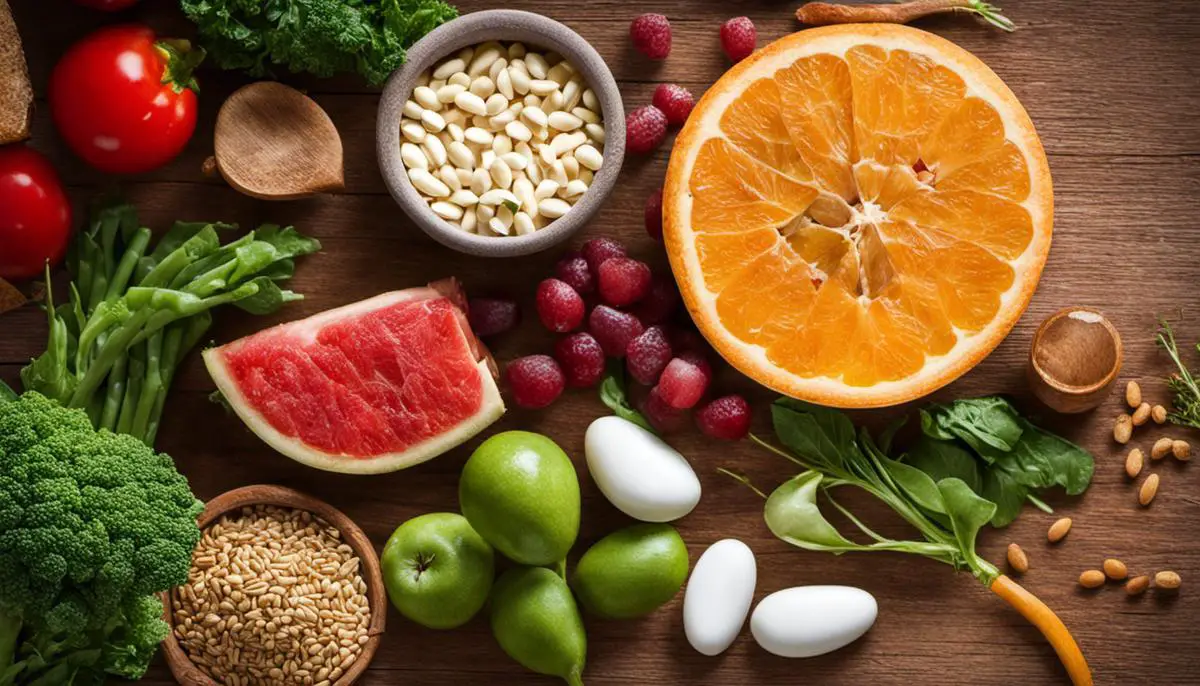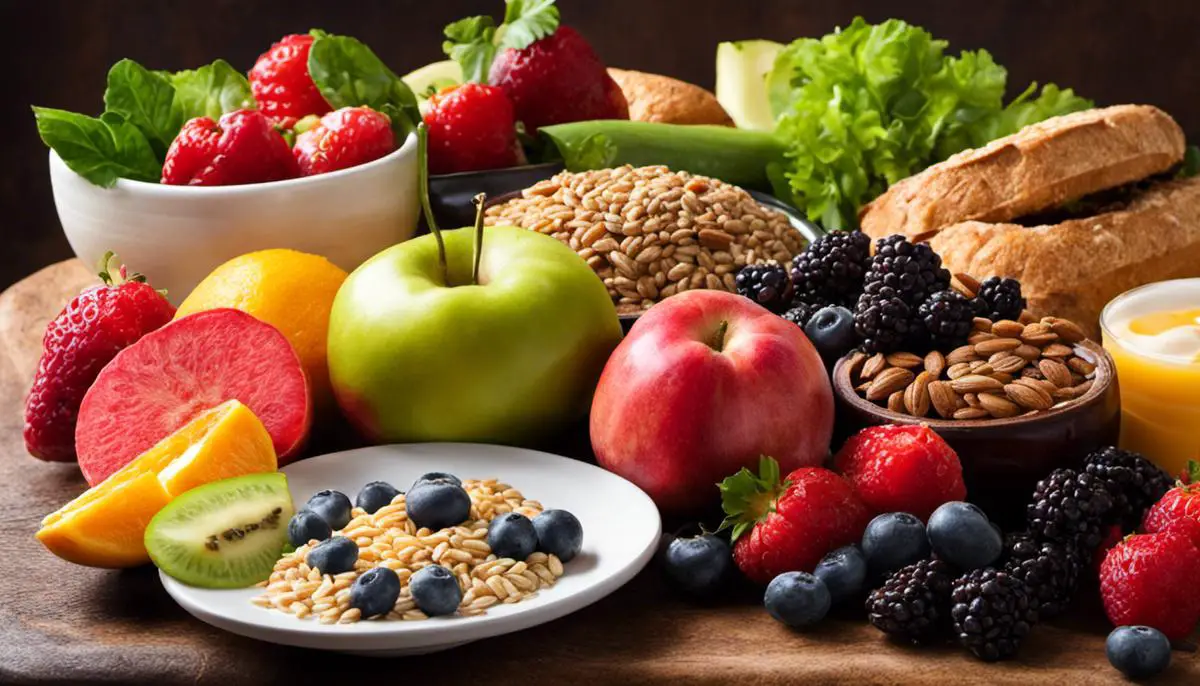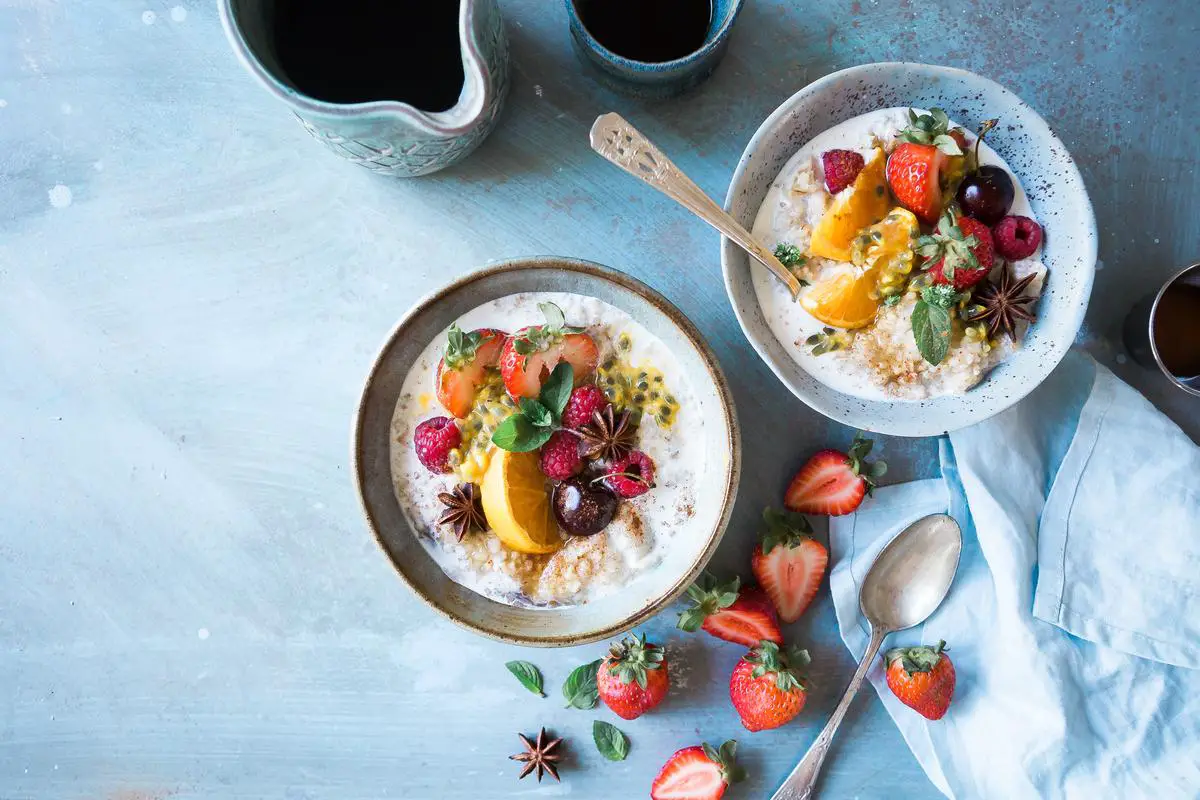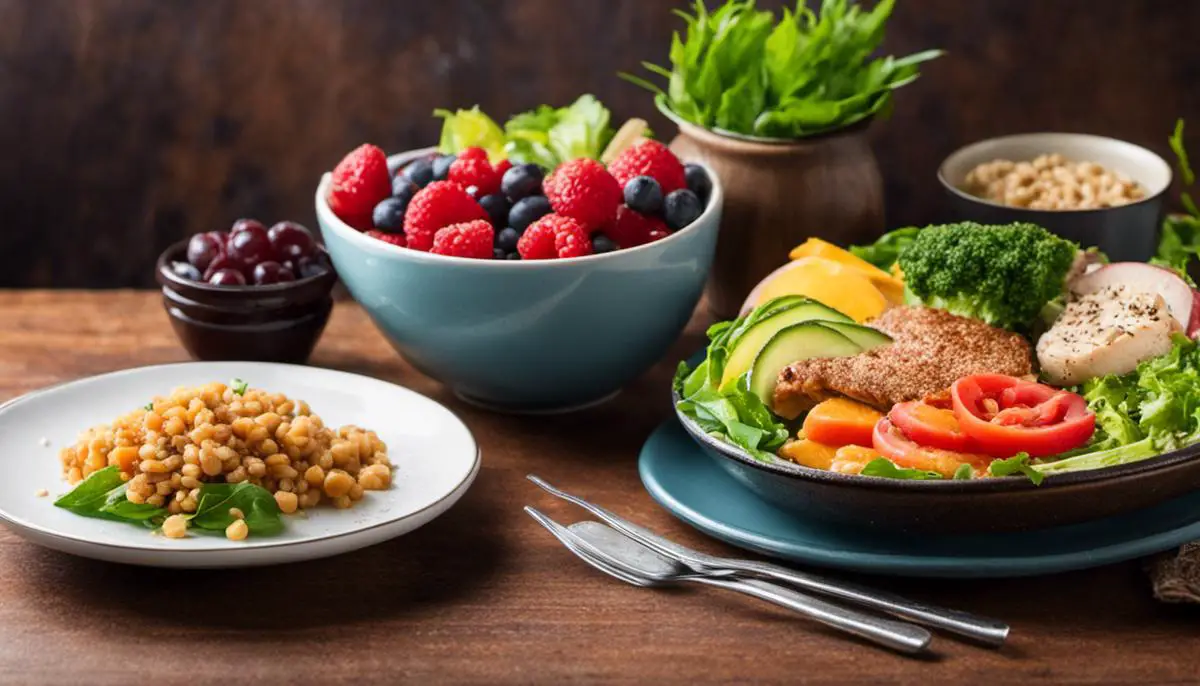Living with diabetes doesn’t mean that enjoying a hearty, delicious breakfast is out of the question. In fact, with a clear understanding of the basics of a diabetic-diet, it’s easy to create well-balanced, nutrient-rich meals that will not only satisfy your palate but also keep your blood glucose levels in control. In this exploration, we divulge into the core knowledge essential for mastering a diabetic diet. This includes the significance of fiber-rich and low-sugar foods and how to effectively combine them for optimal breakfast meals. Further, we dive into specific breakfast foods, their preparatory techniques, and precise portion recommendations to help you start your day healthily.
Understanding Diabetic-Diet Basics
Understanding Diabetic Diet Fundamentals
Learning about a diabetic-friendly diet means familiarizing yourself with different types of foods and their nutritional content. Central to this is understanding the role of carbohydrates in the diet. Carbohydrates, or carbs, break down into sugar in the body. They directly impact blood sugar levels and have to be carefully managed by people with diabetes.
Although carbohydrates increase blood sugar levels, they are still essential for providing energy to the body. Therefore, it is crucial for diabetics to consume a regulated quantity of carbs as part of a well-balanced diet.
Sugar, on the other hand, is usually recommended to avoid or consume in small quantities in a diabetic diet. High-sugar foods cause a sudden surge in blood sugar levels, which can be harmful.
Fiber, both soluble and insoluble, is beneficial for people with diabetes. It slows down the absorption of sugar into your bloodstream, thus preventing sudden spikes in blood sugar levels. Foods rich in fibre include fruits, vegetables, legumes, and whole grains.
The Glycemic Index (GI) is another critical concept for diabetics to understand. It’s a scale that ranks carbohydrates from 0 to 100 based on how rapidly they cause blood sugar levels to rise. Generally, foods with a low GI are superior for managing blood sugar levels.
Choosing the Right Foods
A well-rounded diabetic breakfast can include a variety of foods. High-fiber foods, like whole grain breads and cereals, fruits such as berries and apples, and vegetables like spinach and bell peppers are excellent options. Proteins from lean meats, eggs, or plant sources like beans and tofu can also be included for a wholesome meal.
Healthy fats are another crucial component. Avocado, olive oil, and certain nuts and seeds contribute to a feeling of satisfaction and keep blood sugar levels steady.
Preparing a Diabetic-Friendly Breakfast
A balanced, diabetic-friendly breakfast should include portions of protein, high-fiber carbohydrates, and healthy fats. You could, for example, prepare a vegetable omelet cooked in a small amount of olive oil, served with a slice of whole grain toast and a serving of fresh berries.
Alternatively, a high-fiber cereal, such as oatmeal, topped with a handful of nuts for protein and a side of mixed berries could make for a hearty and healthy start to the day.
Remember, the key is to balance your macronutrients, opt for low-GI foods when possible, and monitor portion sizes. A well-prepared diabetic breakfast can be a delightful and healthy way to start the day while efficiently managing your blood sugar levels.

Healthy Breakfast Choices for Diabetics
Choosing the Right Ingredients for a Diabetic Breakfast
Before diving into specific breakfast recipes, it’s crucial to consider the types of ingredients that are suitable for a diabetic diet. Start with fruits that are high in fiber and low in sugar, such as berries, pears, apples, and oranges. Vegetables, particularly non-starchy ones like spinach, broccoli, peppers, and zucchini, are also excellent choices due to their low-carb content.
Incorporating lean proteins is also vital. Eggs, turkey, chicken breast, and fish are fantastic sources of protein and are low in fats. Having protein at breakfast can help maintain satiety throughout the morning.
Whole grains such as whole wheat bread, oats, and brown rice are ideal as they are packed with fiber and digest slowly, resulting in a steady release of glucose into the bloodstream.
Finally, opt for low-fat dairy products. They are a good source of calcium and vitamin D while keeping the overall calorie content of your meal under control.
Diabetic-Friendly Breakfast Ideas
-
Smoothies: They are a great way to pack in multiple beneficial ingredients. For a balanced diabetic-friendly smoothie, choose low-glycemic fruits like blueberries, add some spinach or kale for extra fiber, mix in a scoop of protein powder, and blend with unsweetened almond milk. This combination ensures a nutritional balance without spiking blood sugar levels.
-
Omelettes: Opt for a vegetable omelette. Sauté non-starchy vegetables like bell peppers, onions, and tomatoes, then add beaten eggs and cook until firm. This low-carb breakfast is high in protein.
-
Oatmeal: Opt for steel-cut oats and pair with high-fiber fruits and a sprinkle of cinnamon. Avoid adding sugar; instead, sweeten your oatmeal naturally with fruits or a small drizzle of honey.
-
Whole grain toast with avocado: Whole grain toast provides the beneficial fiber, and topping it with mashed avocado adds healthy fats and keeps you full longer.
Managing Portion Sizes
One important aspect of maintaining a diabetic-friendly diet is portion control. Even the healthiest of foods can raise your blood sugar if you eat too much at one time. Aim to fill half your plate with non-starchy vegetables, a quarter with protein, and a quarter with whole grains or starchy vegetables. Keep fruit and dairy servings modest, around the size of your fist.
Even with controlling portions, it’s essential to eat a variety of foods to make sure you’re getting a balanced intake of nutrients. Remember, every individual is different, so what works for one person may not work for another. It’s always crucial to check with your doctor or a registered dietitian to get the most accurate dietary recommendations for your specific needs.

Meal Planning and Prep for Diabetic Breakfasts
Advantages of Meal Prepping for Diabetic Breakfasts
Meal prepping for diabetic breakfasts can be a valuable tool for maintaining healthy blood sugar levels. By having meals planned and prepped in advance, you can ensure that you are consuming the right proportions of macronutrients (carbs, protein, and fats) necessary for controlling your blood sugar levels. Additionally, this can also help in weight management, which is important since obesity can worsen diabetes symptoms.
Planning Your Weekly Menu
Plan your weekly breakfast menu around the recommended servings from each food group. Keep a balance of starchy carbs (like whole grains), lean protein (like eggs or Greek yogurt), and healthy fats (like avocados and nuts). Stay conscious of portion sizes, since even healthy foods can lead to blood sugar spikes if eaten in large quantities. For instance, a simple diabetes-friendly breakfast could consist of a slice of whole-grain toast, an egg, a handful of nuts, and a cup of non-starchy vegetables or whole fruit.
Also, remember to vary your meals to ensure you’re getting a wide range of nutrients. For example, you may swap out plain toast one day for a low-carb oatmeal made with almond milk the next.
Shopping for Diabetic-friendly Food Products
Stick to whole, unprocessed foods as much as possible when shopping for a diabetic-friendly breakfast. These types of foods contain the vitamins, minerals, and fiber that your body needs to function optimally. Fruits, vegetables, whole grains, lean proteins, and healthy fats are all good choices.
When selecting pre-packaged foods, always read the nutritional label. Look for foods that are low in saturated fat, added sugars, and sodium. Similarly, always be aware of hidden sugars in food products that may not seem sweet, such as bread and salad dressings.
Healthy Cooking Methods
Adopting healthy cooking methods can greatly assist in maintaining blood sugar levels and promoting overall health. Baking, broiling, steaming, or grilling foods can reduce the amount of added fats, compared to options like frying. This doesn’t mean you have to completely shun your favorite fried foods; simply modify your cooking method. For example, instead of frying eggs, you can opt for a boiled or poached egg.
Meal Prep Strategies
Once your weekly menu is planned and groceries are done, it’s time to meal prep. It can be as simple as boiling a bunch of eggs at the start of the week or prepping low-carb waffles that you can easily pop in the toaster in the morning. Having breakfast components ready to go will reduce the temptation to grab something quick and potentially unhealthy on a busy morning.
On the other hand, you can also prepare full meals in advance. Chia seed pudding, “overnight” oats, smoothie packs, and egg muffins are all examples of meals that can be prepped ahead of time. Remember to properly store these meals in airtight containers to maintain freshness.
Keeping these strategies in mind while prepping your diabetic breakfast can help you maintain your blood sugar levels, save time during your mornings, and boost your overall health.

Photo by brookelark on Unsplash
Equipped with a good understanding of diabetic-diet fundamentals and completely aware of the best breakfast picks, the next logical step involves planning and preparation. We looked into how to organize and prepare diabetic breakfasts to make your mornings smoother. Implementing these nutritious breakfast ideas and integrating these meal prep strategies will go a long way in managing diabetes and embracing a healthier lifestyle. Good diabetic control is not just about what you eat, it’s also about how and when you eat, and these efforts, though seem small, create significant changes over time. As you embark on this journey to better health, remember to enjoy the process and celebrate each small victory along the way.
